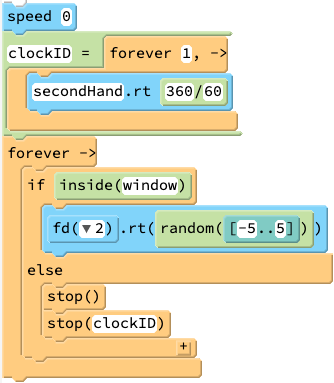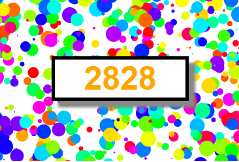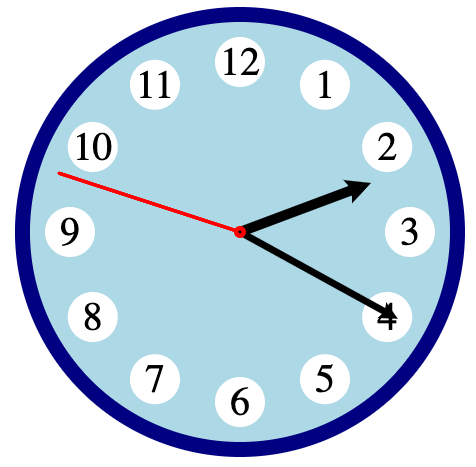Timers (forever!)
Goals:
- Use the Pencil Code
foreverfunction to set up Timing events - Transition from queue-based to frame-based animation
Coding Snippets:
foreversets up a recurring timer that by default executes a callback 30 times per second. Set the timer to fire more or less frequently by specifying the optional first argument.foreverreturns a unique id for each timer- Remove a timer from within its callback by calling
stop(). Outside of its own callback, remove a timer by passing its ID as the argument tostop.
Math and Computer Concepts:
foreveris a Pencil Code function that facilitates executing a callback repeatedly at fixed intervals. It is an alternative to setting up a timing event using the built-in JavaScript functionsetInterval.- Remove a timer created with
foreverusing thestopmethod. From within a timer's callback,stop()(with no arguments) references that timer. Outside of the callback,stop()removes all timers.stop(x)removes a timer with an ID referenced byx.
- When working with forever loops, it is often advantageous to work with frame-based animation. Call
speed Infinityat the beginning of your script, and no longer worry about animation queues! The tradeoff is that you have to code the animation logic yourself.
Activities:
Save each of the following in a folder called Forever.
- PermaPerfectFit: place calls to
sizexyinside the callback toforever, and use these values to constantly display a circle that always fits inside the window perfectly (i.e., centered at the origin with diameter equal to the smaller of the page width or height). - ConfettiCount: use
foreverto perpetually draw dots on the screen in random positions. Use a label to display the number of dots, updating it using techniques described in Label Recycling! - Code a new RandomTurtles program that uses frame-based animation and timers so that it repeats indefinitely. As an added challenge, avoid explicit use of
forloops; rather, usehatchto create your sprites and theeachmethod to iterate over that collection. Code a program that displays two different AnalogClocks, displayed side-by-side. They should both have second hands that move in discrete units (i.e., ticking away once per second). For the first clock, set the time initially with a call to
Date, then update it using a timer that fires once per second. For the second clock, use a timer that fires more frequently, and re-set the clock each time based on a new call toDate. (Why is the second version the better approach?)




